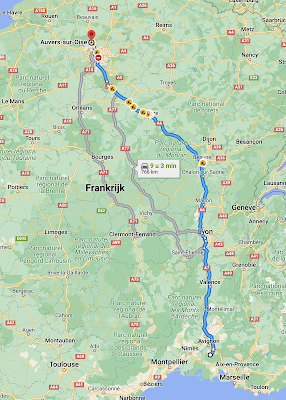Vincent in Arles
(1888)
Gauguin arrived in Arles on 23 October and, in November, he and Vincent painted together. Gauguin depicted Van Gogh in his The Painter of Sunflowers; Van Gogh painted pictures from memory, following Gauguin's suggestion. Among these "imaginative" paintings is Memory of the Garden at Etten.
Their first joint outdoor venture was at the Alyscamps, when they produced the pendants Les Alyscamps. The single painting Gauguin completed during his visit was his portrait of Van Gogh.
After a couple of weeks their relationship began to deteriorate; Van Gogh admired Gauguin and wanted to be treated as his equal, but Gauguin was arrogant and domineering, which frustrated Van Gogh. They often quarrelled; Van Gogh increasingly feared that Gauguin was going to desert him, and the situation, which Van Gogh described as one of "excessive tension", rapidly headed towards a crisis point leading to the mutilation of his ear.
https://en.wikipedia.org/wiki/Vincent_van_Gogh
.jpg)
Paul Gauguin - Van Gogh Painting Sunflowers
1888
Oil on jute
73 x 91 cm
Amsterdam: Van Gogh Museum
https://www.vangoghmuseum.nl/en/collection/s0225V1962
Was Van Gogh really painting a vase of sunflowers when his friend
Gauguin produced this portrait of him? No, he can’t have been: it was
December and far too late in the year for sunflowers. But it’s quite
probable that Van Gogh painted a copy of one of his own sunflower
pictures around this time. The landscape in the background is also
fictional: unlike Van Gogh, Gauguin liked to work from his imagination.
They often argued about this. This painting refers to their
disagreement.
Later, Van Gogh wrote about this portrait: ‘My face
has lit up a lot since, but it was indeed me, extremely tired and
charged with electricity as I was then.’
https://www.vangoghmuseum.nl/en/collection/s0225V1962
Portrait of Gauguin
December 1888
Oil on burlap on panel
38,2 x 33,8 cm
Amsterdam: Van Gogh Museum
https://www.vangoghmuseum.nl/en/collection/s0257V1962
Van Gogh painted his friend, the artist Paul Gauguin, in their studio
in the Yellow House. He made this small portrait on jute – an unusual
but inexpensive material. Gauguin had bought some in Arles for the two
of them to use. The coarse structure of the cloth made painting
difficult, so Van Gogh applied the paint thickly and opted for a strong
red-green contrast.
https://www.vangoghmuseum.nl/en/collection/s0257V1962














.jpg)























.jpg)










.png)